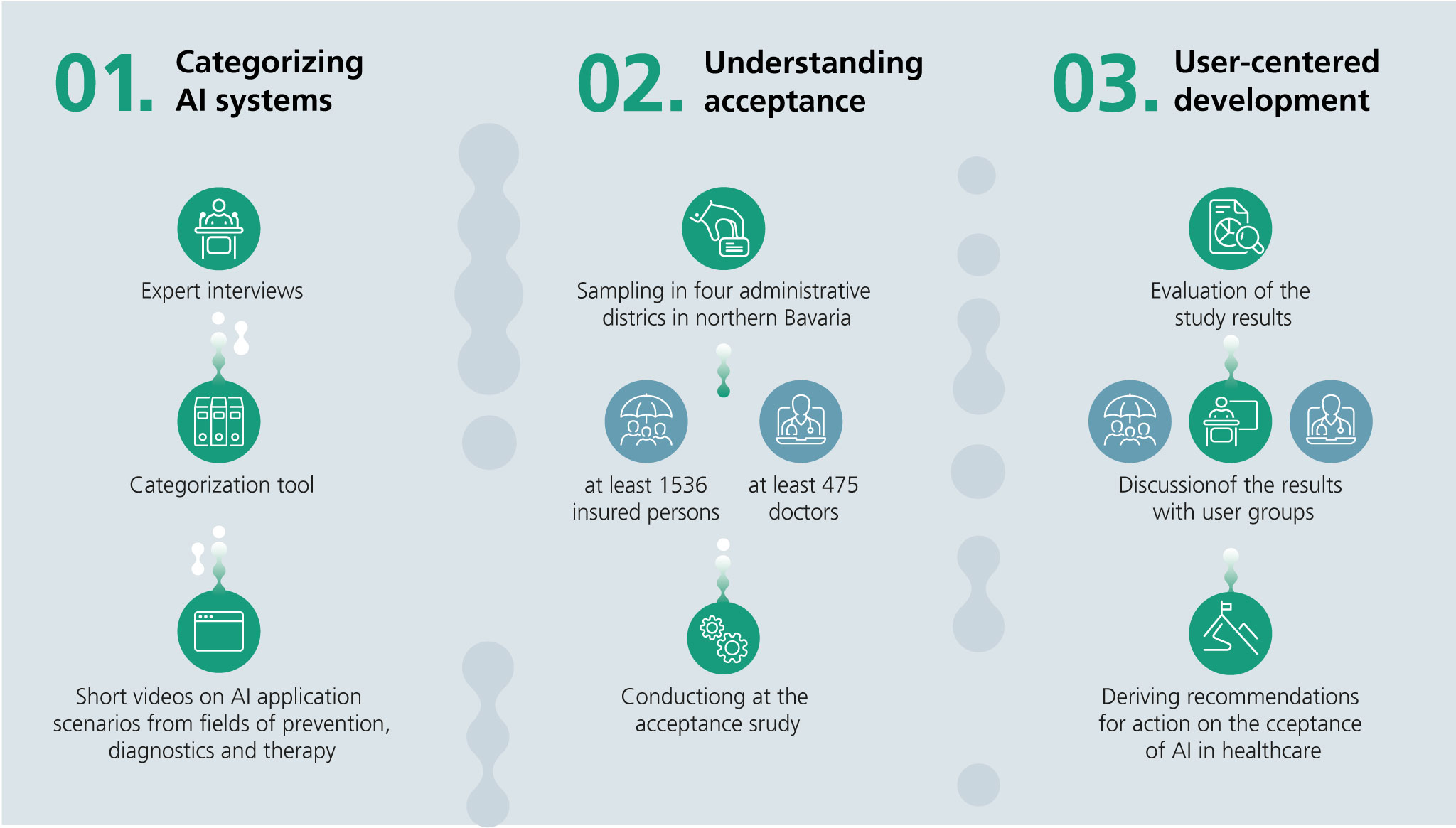The goal: Understanding acceptance factors of AI applications and making them usable for practical use
Despite the great potential, there is still little knowledge about the acceptance of AI applications among insured persons and doctors. The research project "KI-BA: Artificial intelligence in healthcare - conditions of acceptance by insured persons and doctors" has therefore set itself the goal of identifying individual and contextual factors that influence the acceptance and use of AI applications in various areas of healthcare as part of an acceptance study with around 500 doctors and 1,500 insured persons: Factors that could play a role here include education, income and gender, as well as cognitive abilities, affinity for technology, personality, the care and housing situation and the personal network. The results of the acceptance study are to be translated into practical and user-centred recommendations for the use of AI in healthcare in order to make the findings usable for stakeholders in practice, such as patients, relatives, doctors, clinics, health insurance companies, insurers and authorities.
The path: From the categorisation of AI applications to recommendations for practical action
AI applications for the healthcare sector are diverse and can be differentiated, for example, in terms of the specialist discipline, the field of research or the target group: Vital signs analysis in prevention, image recognition and understanding as well as big data analyses in diagnostics and therapy or care robots are just a few examples. The first phase of the project will therefore focus on the user-centred development of a categorisation tool to define the dimensions and categories for AI applications in healthcare, which will be developed iteratively together with experts from various care and research areas.
Using this categorisation tool, practical AI application scenarios are selected and translated into animated video stimuli, which form the basis for the second project phase, the cross-sectional acceptance study with insured persons and doctors, and are evaluated with these target groups with regard to various acceptance factors. Particular attention will be paid to the similarities and differences between doctors as service providers and insured persons as service recipients. In order to make the results of the acceptance study usable in practice, concrete recommendations for the use of AI in healthcare will be developed together with various stakeholders in the third phase of the project. The aim of these recommendations for action is to counter the acceptance risks identified in the acceptance study with guidelines for the user-centred development and design of AI systems and user-centred strategies for their use in statutory health insurance.

